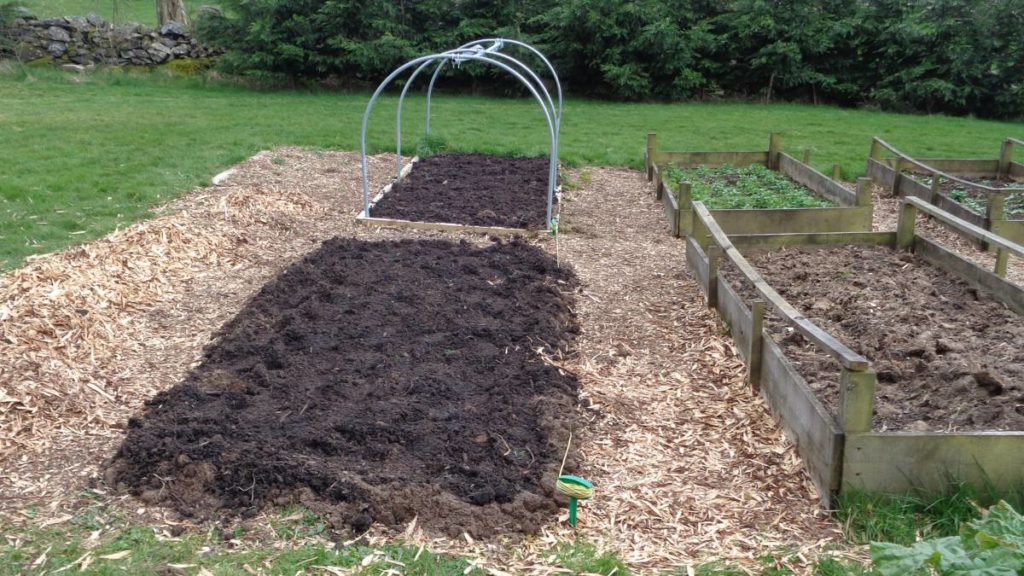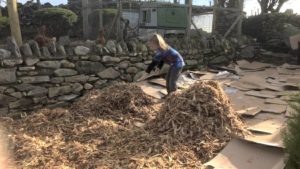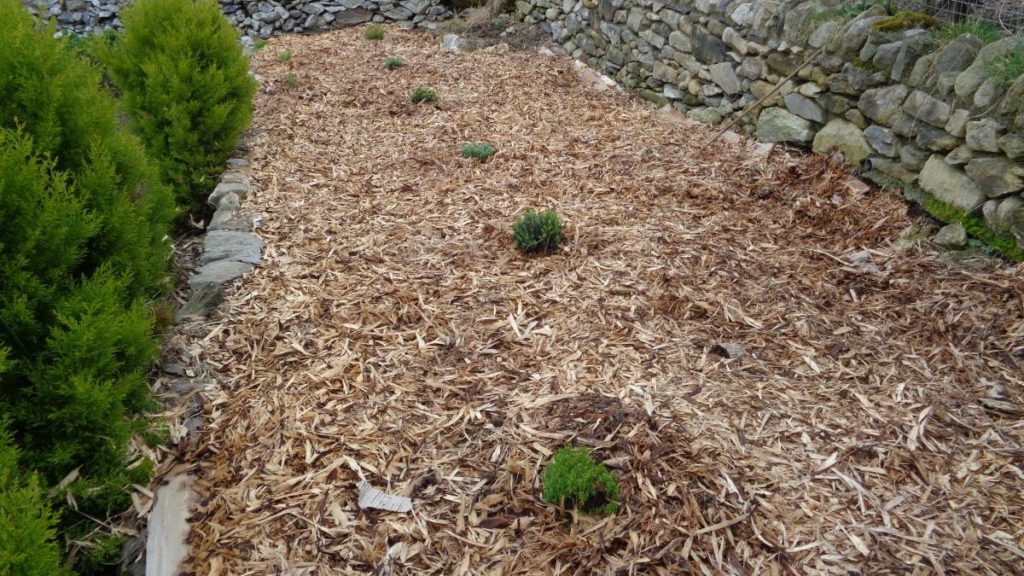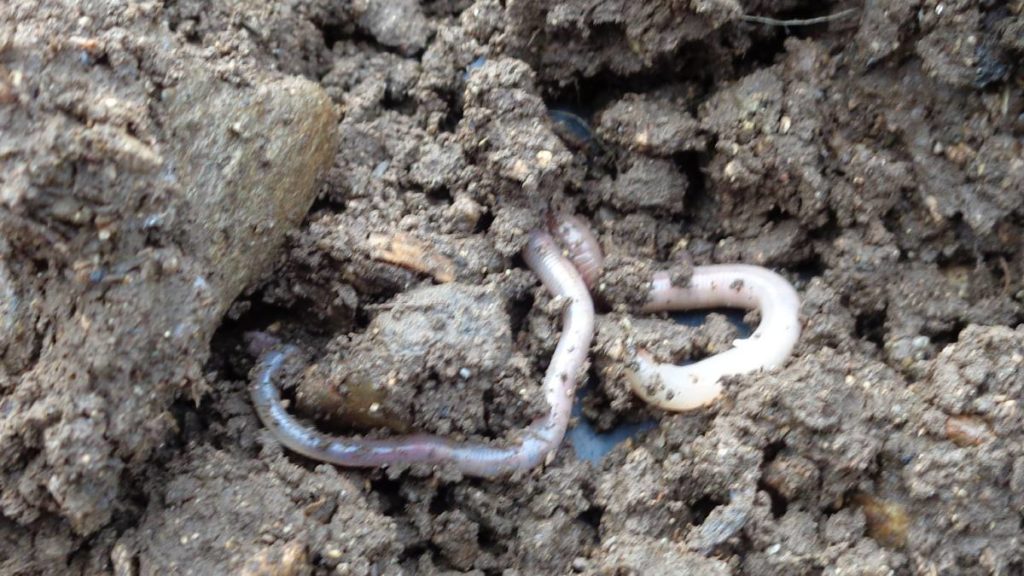New Veg Bed
Up in the field plot where I’ve got the raised beds, my new bed is finished. To recap, the area was under woodchips for a year. All I did was to rake off the top layer and open up the soil below by rocking a fork in the ground until the surface lifted. Not fork over.
We’ve now covered that with a layer of home made compost and soil about 3 ins, topped off with an inch of the bought-in compost I had a bulk delivery of. After giving it a day to settle, I’ve shuffled over it to firm it up.
It seems a shame to deliberately compress a light airy soil but both the beans and onions like a firm soil and that’s what’s being planted. The broad beans are just so I can compare their performance with those in the raised bed next to it.
Narrow Beds Postponed
I was planning on trialling some narrow beds, just 75 cm (30 ins) width rather than the 120 cm (48 ins) raised bed standard. It’s a size used extensively in the USA and by some organic market gardeners in Europe. I can see potential advantages for that width – and drawbacks too. However, I’m already well behind on things so that’s an experiment for next year now.
Setting Up The Terraced Decorative Bed
Right at the end of February I, with a lot of help from my grandson, covered the terraced bed with cardboard and bark peelings as a weed suppressant. We, by which I mean Val, has still to fully decide what’s going in on this. Bushes mainly as it has to be very low maintenance.
We’d bought half a dozen hebes last autumn which were potted on and kept undercover for the winter. They’ve grown quite a lot and are already becoming pot-bound. Val positioned them where she wanted them, along with a couple of dianthus she had in pots. My mission was to plant them.
This was simple enough; just move the mulch aside and cut a hole in the cardboard with my trowel before digging a hole. Drop the plant in, backfill and replace the mulch. Job done.
When I’d finished the plants looked really lost in the bed. Spots of green on a brown background. There’s more to go in the bed yet, but we’re avoiding over-crowding. In a few years they’ll be a lot larger and I don’t want to be trying to dig them out and replant them somewhere else.
Worms
What was interesting was the number of worms I came across. When I started cultivating here I’d noticed that the soil had very few worms. In fact, I was hard pressed to find any. Indicative of very lacking in organic matter. Repeatedly mulching with grass clippings not only suppresses weeds but feeds the soil life and increases the organic matter and then humus.
Just under the cardboard there were quite a few immature worms but lower down in the soil I came across larger mature worms. You can tell a mature worm by the ring around the body which is known as the saddle or more technically the clitellum. Fascinating creatures and vital for a healthy soil. Without earthworms we’d be in deep trouble.
To quote from Charles Darwin’s work of 1881 – The Formation of Vegetable Mould, Through the Action of Worms: With Observations on Their Habits
Without the work of this humble creature, who knows nothing of the benefits he confers upon mankind, agriculture, as we know it, would be very difficult, if not wholly impossible.








We bought a load of used growbags they had been stacked for a couple of months when we lifted them on Saturday we found loads of worms under the bags that went safely back into the ground
We also had a mixer and mixed the growbag compost with some horse manure for the potting and the raised beds hopefully this will help the worm population?
Hi Rowland
I’m sure it will help the worm population – there are 27 different species of worms in the UK, evolved to live on different things. I don’t think it will help the common earthworms but Brandling and Green Worms will love it.
Our whole site rotavates, quite heavily. I continue to hand-dig, and find there are plenty worms in my plot. Others don’t seem to mention coming across any. Is there information on what rotavating does to worms? Thanks.
Please see my comments on worms and rotavating here: Growing Questions & Answers March 2019